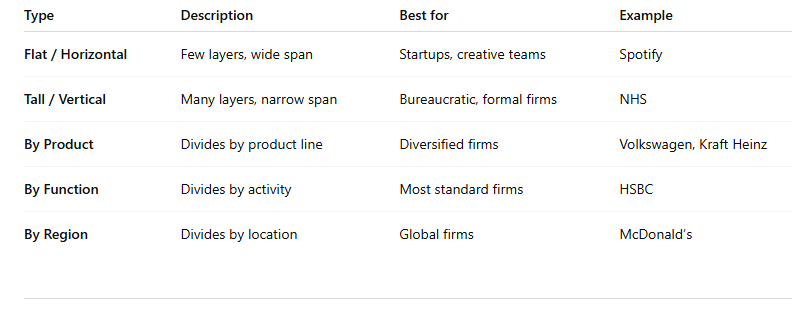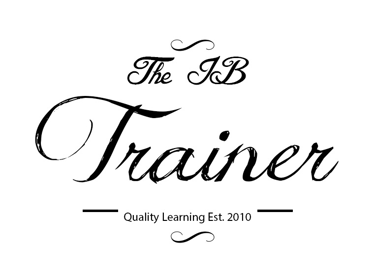From Flat to Tall How Businesses Actually Build Their Org Charts
Learn IB Business Management organisational structures - flat, tall, by product, by function, and by region - with real company examples. Excel in your IB Business!
IB BUSINESS MANAGEMENTIB BUSINESS MANAGEMENT MODULE 2 HUMAN RESOURCE MANAGEMENT
Lawrence Robert
10/13/20254 min read


From Flat to Tall: How Businesses Build Their Organisational Charts
Just imagine for a second if your school had just two teachers for everyone, and that's it, and each teacher taught everything. Chaos, right? But also fun - no long approval chains, no endless ‘can I speak to your supervisor’ emails. That’s basically what a flat structure feels like.
Today we are covering how businesses design their organisational charts - the diagrams that show who reports to who, and how information flows inside a company. Whether you’re a future CEO or just trying to survive your IB Business Management exams, this stuff matters. Understanding flat vs tall, or by product vs by region, isn’t just boring theory - it explains why your favourite brands run the way they do.
Let’s meet some IB Business Management real-world examples and human stories behind the boxes and arrows.
Flat (or Horizontal) Structures
If you’ve ever worked in a small café, indie clothing shop, or tech startup, you’ve probably seen a flat structure in action.
There’s the owner, a few supervisors, and then everyone else. No labyrinth of managers, no “approval hierarchy.” Everyone pitches in, and communication moves fast - partly because there’s no one to slow it down.
That’s a flat organisational structure: few layers, wide span of control, short chain of command.
IB Business Management Real-life example: Spotify’s “Squads and Tribes” model
Spotify (yes, the one feeding your late-night playlists) famously runs a super-flat structure. Instead of layers of bosses, they have “squads” - small autonomous teams that handle one product area (like playlists, ads, or recommendations). Each squad manages itself with minimal oversight.
The benefit? Fast innovation and ownership. The downside? Managers sometimes juggle so many teams it feels like miracles are taking place one after another.
“We don’t have managers, we have servants,” one Spotify developer joked - meaning leaders support rather than command.
Pros of Flat Structures:
Faster communication and decisions
Informal and friendly culture
Motivating for experienced, independent staff
Lower costs (fewer managers)
Cons:
Overwhelming for managers with many direct reports
Confusing accountability in large teams
Risky if employees lack self-management skills
Tall (or Vertical) Structures - “The Corporate Ladder in Action”
Now imagine the opposite. You’re in a huge multinational firm like HSBC or Unilever. There are executives, directors, senior managers, middle managers, assistant managers… and finally, you.
That’s a tall structure - multiple layers stacked neatly, like a skyscraper. Each employee reports to someone, and that person reports to someone higher. The positive bit? Everyone knows who’s in charge. The negative bit? It can feel like climbing a ladder with missing rungs.
IB Business Management Real-life example: The NHS (UK)
The National Health Service operates with tall, hierarchical structures for obvious reasons: accountability and control. A hospital’s consultant supervises junior doctors, who supervise nurses, who may manage healthcare assistants. Clear chain of command saves lives - literally.
But this system can also slow things down. Need approval for a new piece of equipment? That could take weeks, maybe months. It’s bureaucracy at its finest (and worst).
Pros of Tall Structures:
Clear accountability
Easier supervision and control
Defined career progression
Consistency in decisions
Cons:
Communication slows down
Bureaucratic and inflexible
Employees feel distant from top management
Organisation by Product - “Dividing by What You Sell”
Imagine you run a global company making cars, motorbikes, and electric scooters. Each line has its own marketing team, engineers, and budgets. That’s organisation by product - grouping people by the things they make or sell.
IB Business Management Real-life example: Volkswagen Group
VW owns Audi, Porsche, Skoda, and more. Each brand operates like a mini-company under one big umbrella. Each has its own CEO and teams. It’s efficient - Porsche focuses on high-performance cars; Skoda focuses on affordability.
Kraft Heinz also uses this approach: one team handles sauces, another snacks, another frozen meals. Each division makes product-specific decisions.
Pros:
Specialists focus on their product line
Clear accountability by product performance
Flexibility to adapt strategy per product
Cons:
Duplication of roles (multiple marketing teams)
Risk of divisions competing internally
Harder to maintain consistent company culture
Organisation by Function - “Dividing by What You Do”
This is probably the structure you’ll find most often - the functional structure. People are grouped by what they do, not what they sell. So you’ve got marketing, finance, HR, and operations, each led by a department head.
IB Business Management Real-life example: HSBC
At HSBC, there’s a Global Head of Finance, Global Head of Risk, Global Head of HR, etc. Each function runs worldwide, collaborating across regions and business lines.
Pros:
Clear specialisation and expertise
Efficient use of skills and resources
Strong departmental identity
Cons:
“Silo mentality” - departments might not communicate
Slower decisions that need cross-functional cooperation
Conflicts over priorities
Organisation by Region - “Dividing by Where You Are”
Now we go global. Big multinational firms like Unilever, McDonald’s, or Amazon often organise by region.
It’s logical - markets in Europe, Asia, and Africa operate differently. You can’t sell the same product in Tokyo and in Manchester without adapting (localising) it. Each regional office makes its own decisions about operations, logistics, and marketing.
IB Business Management Real-life example: McDonald’s
McDonald’s has regional divisions - North America, Europe, Asia Pacific, Middle East & Africa. Each has its own director who adapts menus (you’ll find teriyaki burgers in Japan and McSpaghetti in the Philippines).
Pros:
Better understanding of local markets
More flexible and responsive
Easier logistics and local customer focus
Cons:
Duplication of roles across regions
Risk of inconsistency across brand
Coordination challenges across time zones
Bringing It All Together - “The Human Side of Boxes”
Every org chart - flat, tall, by product, by region - is a reflection of human priorities: control, speed, flexibility, trust.
Startups flatten to stay agile.
Governments grow tall for safety and consistency.
Big brands divide by product to specialise.
Multinationals divide by region to adapt.
IB Business Management tip: In exams, when you’re asked to “evaluate the most suitable structure,” don’t just describe - apply! Consider size, culture, industry, and location.
Example: “Tesla’s innovative culture suits a flatter, decentralised structure to encourage creativity.”
Quick Recap Table
Stay well,


IB Complete Support Courses, a new generation of affordable support materials directed at IB students seeking grades 6 or 7.
© Theibtrainer.com 2012-2025. All rights reserved.
